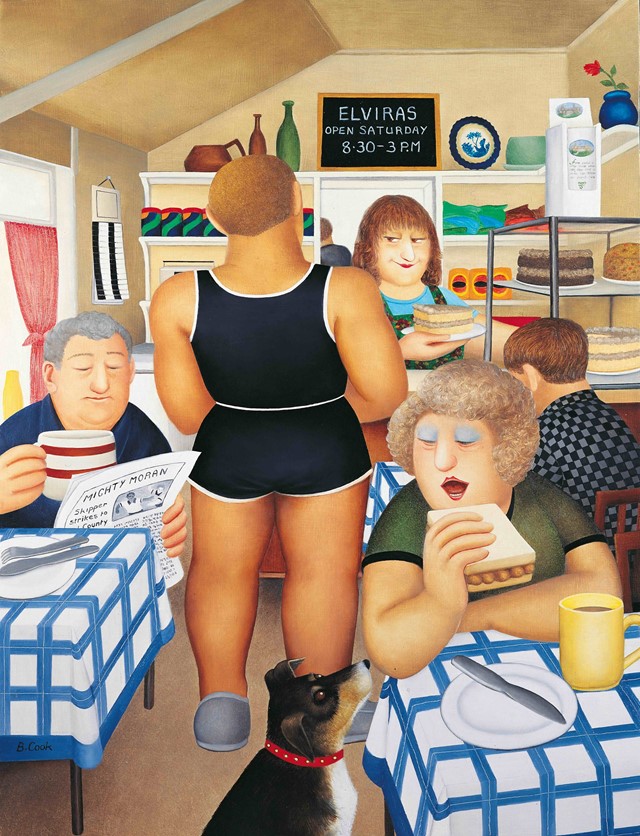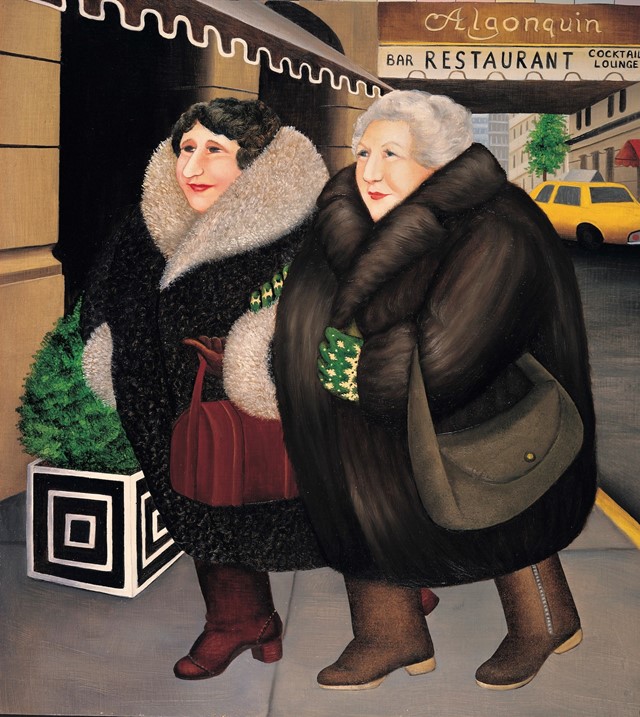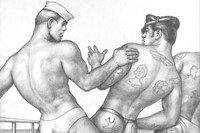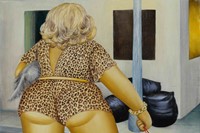The new exhibition invites viewers to see both seemingly disparate artists through a lens of humour, desire and corporality
At first glance, Beryl Cook and Tom of Finland might seem like an odd pairing for an exhibition. Indeed, living in early 20th-century Europe may be their only commonality. But Studio Voltaire’s curator Nicola Wright and director Joe Scotland “had an instinctual reaction to the ways they both approached the body,” according to Scotland. And that’s how their exhibition Beryl Cook / Tom of Finland, which opens this week, first began.
A dash of serendipity helped the exhibition come to life. While the organisers were busy working on the concept, the Tom of Finland Foundation reached out to them about a possible collaboration for Pride. “This was a karmic sign so we immediately responded with our idea,” recalls Wright. They were already in touch with the Beryl Cook Estate for a merchandise partnership, “but as we kept digging through the work, it became apparent that there was material to exhibit,” she says.
Coinciding with Studio Voltaire’s 30th anniversary, the resulting exhibition juxtaposes Cook’s colourful images of voluptuous small-town ladies and boisterous bar brawls with Tom of Finland’s ritualistic sexual encounters between leather-clad hunks in black and white. Similar clothes and gestures provide the connecting thread in the show’s curation.
“They both depicted extravagant outfits and specific facial features in their subjects,” says Wright. In other cases, the organisers see a rather more subdued similarity between the two. “A longing look or a turned head within a crowded scene might have an underlying storyline,” she adds. Cook’s The Lockyer Tavern (1974), for example, depicts a working-class pub where a well-endowed woman and an older man occupy the forefront of a jubilant scene. A group of two gentlemen and their female friend in front of a far-off door stare directly at us, alluding to what was believed to exist as an off-the-radar gay bar in the back.

Tom of Finland’s euphoric illustrations of bondage may seem to leave little to interpretation. In an untitled drawing from 1964, two leather daddies tie another man to a tree. His pants pulled down, he waits for the leather belt in one man’s hand to slap his buttocks. The artist’s detailed sketching – similar to Cook’s meticulous illustration of her figures – makes sure to accentuate the belt-holder’s large bulge as well as the tied man’s submissively eager gaze. The show, however, suggests an alternative exploration of his universe through the element of humour, an element indeed shared by both artists. “They both applied humour through depictions of desire,” suggests Scotland. While Tom of Finland’s approach to carnal yearning was overt, the figures’ impossibly-built physiques and untamed appetite for sex infused into his juxtapositions a sense of playfulness. Cook, on the other hand, concealed her hints of desire in tongue-in-cheek depictions of everyday life.
For Wright, a shared attribution of corporality is evident in how “they both gave the people they portrayed such possession of their scene”. She believes that Cook’s injection of unapologetically feminine bodies into the centre is a provocative tie to Tom of Finland who turned daringly gay men into the protagonists of their own fantasies.

A selection of ephemera related to both artists’ practices makes the pairing all the more vivid. As a beloved figure in her native Britain, Cook received an inordinate amount of fanmail in her lifetime and she answered a large sum of these letters. Besides a selection of her correspondences, the show also features some photo albums that inspired her paintings. Although Tom of Finland burnt all of his letters out of the fear of inadvertently outing their senders, he cut out and kept their stamps some of which constitute the show’s memorabilia.
“They were both observers of the societies around them,” Scotland adds. Both positioned somewhere between the inside and outside of their worlds, Cook and Tom of Finland similarly adopted an uncompromising subjectivity in their observations. Through an alchemy of fantasy and intention, they orchestrated transformative narratives that stem from ecstatic realities.
Beryl Cook / Tom of Finland is at Studio Voltaire in London until 25 August 2024.






